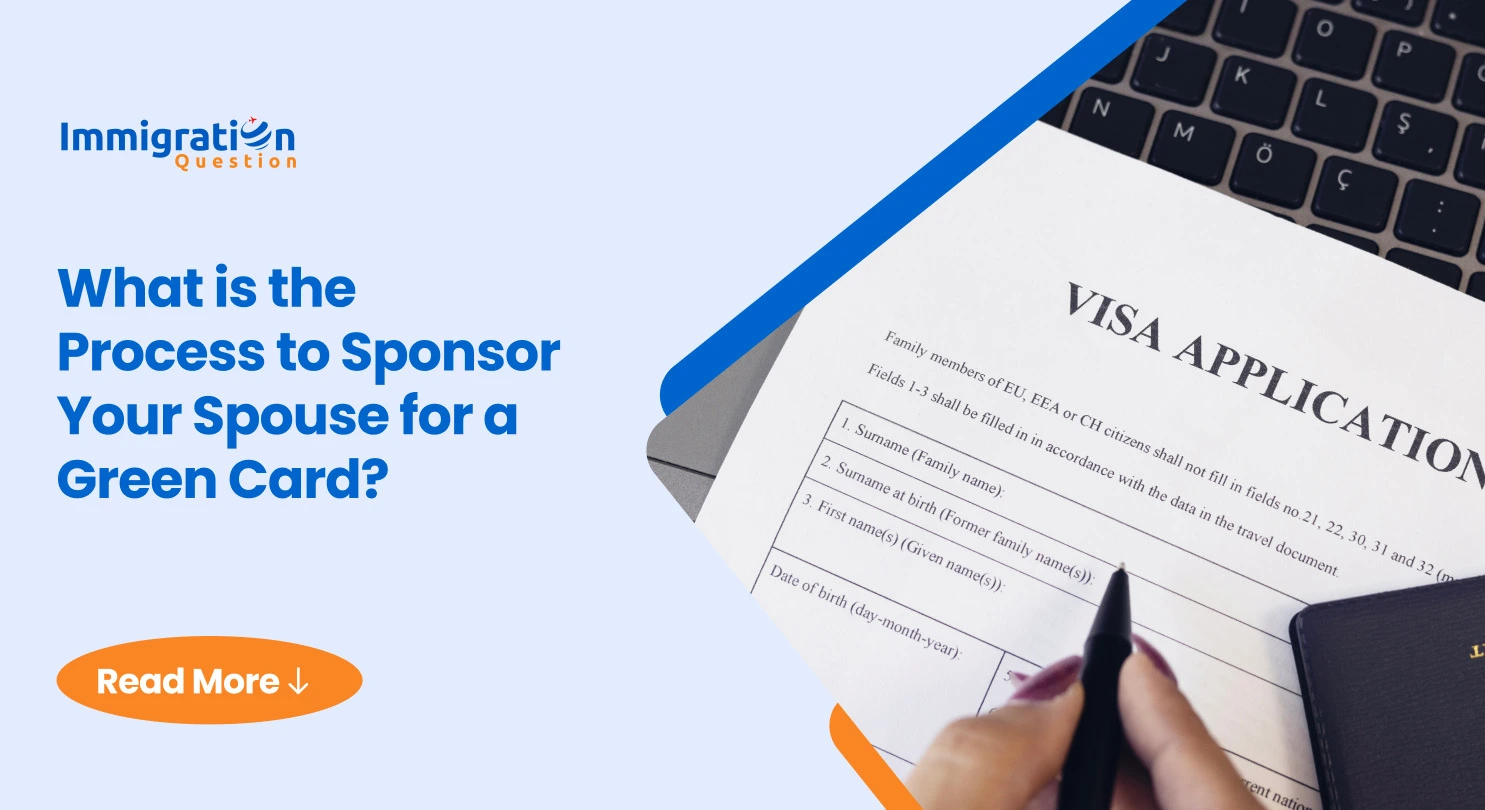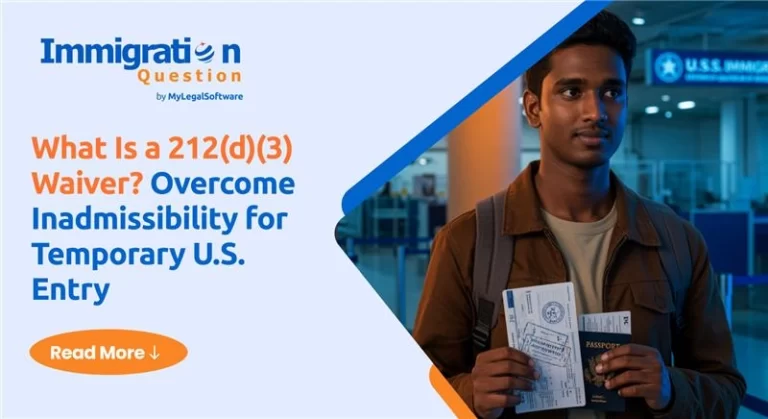Sponsoring your spouse for a Green Card is an essential step toward securing lawful permanent residence in the United States for your loved one. This process, commonly known as family-based immigration, allows U.S. citizens and lawful permanent residents (LPRs) to bring their foreign spouses to the U.S. and establish a life together. However, the process involves meeting strict eligibility requirements, filing multiple forms, and adhering to legal timelines.
If you’re married to a foreign national and want to secure permanent residency, understanding the steps involved is crucial. Seeking guidance from a Family-Based Immigration Attorney can help you navigate the process smoothly and avoid delays or errors.
In this blog, we’ll outline the eligibility requirements, application steps, and common challenges in sponsoring your spouse for a Green Card.
Why Understanding the Spouse Green Card Process is Important
The spouse Green Card process involves a series of legal steps and thorough scrutiny by U.S. Citizenship and Immigration Services (USCIS) and the Department of State. Understanding these steps ensures that you:
- Prepare and submit a complete and accurate application.
- Avoid delays caused by incomplete or incorrect documentation.
- Meet eligibility requirements to prevent application denial.
Whether your spouse is already in the United States or living abroad, knowing the appropriate process can help you take the necessary steps toward permanent residency.
Who Can Sponsor Their Spouse for a Green Card?
To sponsor your spouse for a Green Card, you must meet certain requirements:
U.S. Citizenship or Lawful Permanent Residency
- U.S. citizens can sponsor their foreign spouse for an immediate relative Green Card.
- Lawful Permanent Residents (LPRs) can sponsor their spouse under the family preference category.
Legal Marriage
- Marriage must be legally recognized in the country where it took place.
- Common-law marriages may be recognized depending on the state or country where the marriage was established.
Proof of Genuine Relationship
- USCIS requires proof that the marriage is genuine and not entered into solely for immigration benefits.
- Evidence may include joint financial documents, wedding photos, travel records, and affidavits from family and friends.
Financial Ability to Support Your Spouse
- The U.S. sponsor must meet the income requirements to prove they can financially support their spouse.
- Form I-864 (Affidavit of Support) must be submitted to demonstrate financial capability.
Types of Spouse Green Card Processes
Depending on where your spouse currently resides, the Green Card process follows one of two main pathways:
1. Adjustment of Status (If Spouse is Already in the U.S.)
If your spouse is already in the United States on a valid visa, they can apply for Adjustment of Status without leaving the country.
Step 1: File Form I-130 (Petition for Alien Relative)
The U.S. citizen or LPR spouse must file Form I-130 with USCIS to establish the relationship.|
Step 2: File Form I-485 (Application to Adjust Status)
After Form I-130 is approved, the foreign spouse can file Form I-485 to adjust their status to that of a lawful permanent resident.
Step 3: Attend Biometrics Appointment
The applicant will be required to attend a biometrics appointment to provide fingerprints, a photo, and a signature.
Step 4: Attend Green Card Interview
Both spouses will attend an interview with a USCIS officer to verify the legitimacy of the marriage.
Step 5: Receive Green Card
If approved, the spouse will receive a Green Card granting lawful permanent residence.
2. Consular Processing (If Spouse is Abroad)
If your spouse is living outside the United States, they will go through Consular Processing to obtain their Green Card.
Step 1: File Form I-130
The U.S. citizen or LPR spouse files Form I-130 with USCIS to establish the marriage relationship.
Step 2: Wait for Approval and Case Transfer to NVC
Once approved, USCIS forwards the case to the National Visa Center (NVC) for processing.
Step 3: Submit Form DS-260
The foreign spouse completes Form DS-260 (Online Immigrant Visa Application) and submits necessary documentation.
Step 4: Attend Consular Interview
The foreign spouse attends an interview at the U.S. embassy or consulate in their home country. During the interview, a consular officer will verify the relationship and assess eligibility.
Step 5: Receive Visa and Enter the U.S.
If approved, the spouse receives an immigrant visa to enter the U.S. and become a lawful permanent resident.
Financial Requirements for Sponsoring a Spouse
To sponsor your spouse for a Green Card, you must demonstrate that you can financially support them.
Form I-864 (Affidavit of Support): This form is required to show that you meet the income requirement. The minimum income level is 125% of the Federal Poverty Guidelines, but this amount varies depending on household size.
Alternative Options: If the petitioner does not meet the income requirement, a joint sponsor may be used to fulfill the financial obligations.
Common Challenges and How to Overcome Them
Sponsoring a spouse for a Green Card can be a complex process. Here are some of the most common challenges and how to avoid them:
Insufficient Proof of a Genuine Relationship
USCIS scrutinizes marriage-based applications closely to prevent fraud. Insufficient proof of a genuine relationship can result in delays or denials.
How to Avoid This: Submit a variety of evidence, such as:
- Joint bank statements.
- Lease agreements or property deeds.
- Photos from family gatherings and vacations.
- Correspondence or chat logs.
Incomplete or Incorrect Forms
Filing incomplete or inaccurate forms can lead to delays or rejection.
How to Avoid This: Double-check all forms before submission and ensure all required documents are included. Working with a Family-Based Immigration Attorney can help ensure that all forms are correctly completed and submitted.
Failure to Meet Income Requirements
Failure to demonstrate sufficient income can result in application denial.
How to Avoid This: Calculate your income carefully and consider using a joint sponsor if necessary.
How a Family-Based Immigration Attorney Can Help
Navigating the spouse Green Card process can be overwhelming, especially with the risk of delays or denials. Partnering with a Family-Based Immigration Attorney can make the process smoother and increase your chances of success. Here’s how an attorney can help:
- Application Preparation and Filing: Attorneys ensure that Form I-130, Form I-485, and other required documents are accurately completed and submitted.
- Proof of Relationship Assistance: Attorneys guide you in gathering strong evidence to prove the authenticity of your marriage.
- Consular Interview Preparation: If your spouse is applying through consular processing, attorneys help prepare for the visa interview and address any concerns.
- Handling Requests for Evidence (RFEs): Attorneys can respond to USCIS requests for additional documentation, minimizing the risk of delays or denials.
Frequently Asked Questions About Sponsoring a Spouse for a Green Card
-
How Long Does the Spouse Green Card Process Take?
The timeline varies depending on whether the spouse is applying through adjustment of status or consular processing. It typically takes 12 to 18 months for the entire process to be completed.
-
Can My Spouse Work While Waiting for a Green Card?
If the spouse is applying for adjustment of status, they can apply for a work permit by filing Form I-765 (Application for Employment Authorization) along with Form I-485.
-
What Happens If My Green Card Application is Denied?
If the application is denied, you will receive a notice explaining the reasons. An appeal or motion to reopen the case may be possible depending on the circumstances.
-
Can I Sponsor My Spouse If I Am a Green Card Holder?
Yes, lawful permanent residents (LPRs) can sponsor their spouse, but the process may take longer than it does for U.S. citizens.
Take the Next Step Toward Securing a Green Card for Your Spouse
Sponsoring your spouse for a Green Card is a critical step toward building a future together in the United States. However, the process requires careful attention to detail, and any mistakes can lead to unnecessary delays or denials. Seeking assistance from a Family-Based Immigration Attorney can simplify the process and ensure that all necessary steps are followed correctly.
For expert legal assistance and personalized guidance on sponsoring your spouse for a Green Card, visit ImmigrationQuestion.com today. Let us help you navigate the family-based immigration process with confidence and success.





